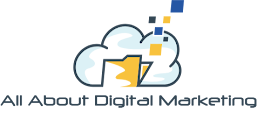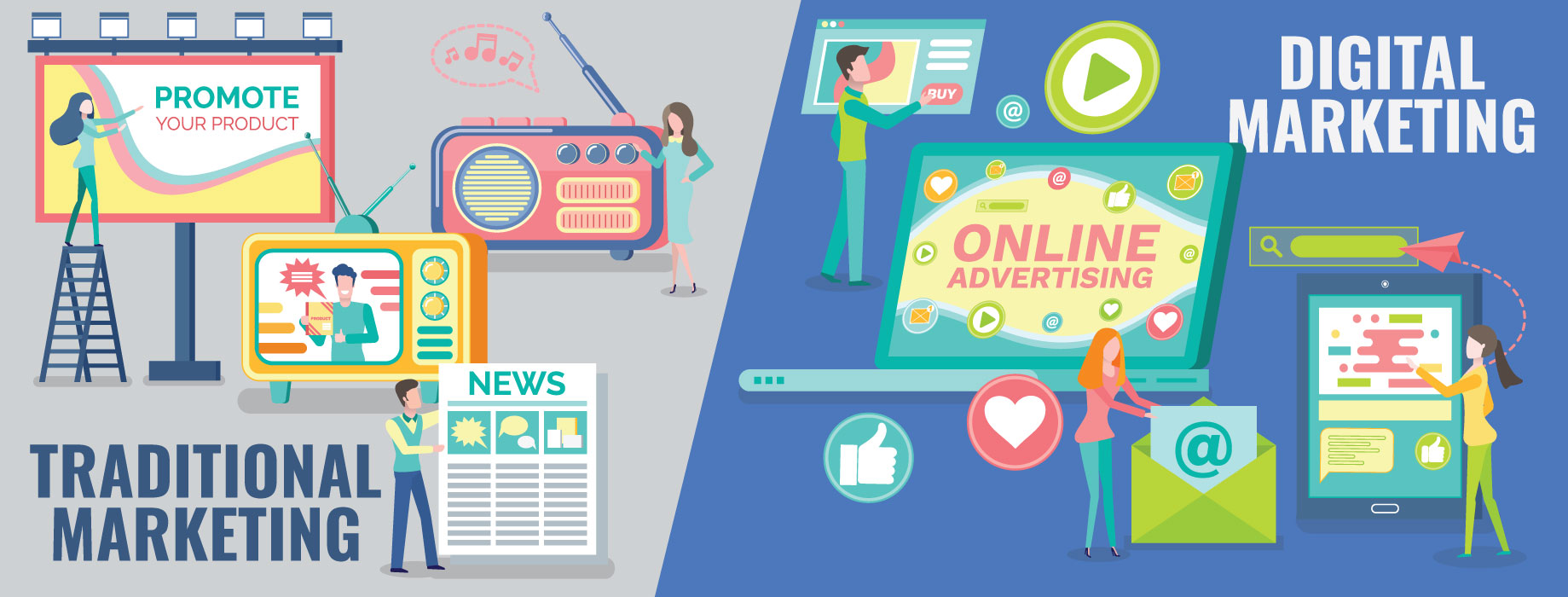INTRODUCTION
In the world of marketing, businesses have long relied on traditional marketing methods to promote their products and services. However, with the advent of the internet and technology, digital marketing has become a powerful alternative, changing how businesses connect with their target audience. While traditional marketing and digital marketing aim to achieve similar goals, they differ significantly in approach, scope, cost, and effectiveness. Let's explore the key differences between traditional marketing and digital marketing.
1. Scope and Channel:
Traditional marketing includes conventional advertising methods that existed before the Internet age. These include print media (newspapers, magazines), broadcast media (television, radio), direct mail, outdoor advertising (billboards, posters), and telemarketing. On the other hand, digital marketing revolves around internet-based platforms and channels. This includes Search Engine Marketing (SEM), Search Engine Optimization (SEO), Social Media Marketing, Email Marketing, Content Marketing, Display Advertising, Photo Marketing benefits, etc.
2. Reach and Target:
Traditional marketing is often localized or region-specific, limiting the reach of businesses within a certain geographic area. While television and radio have a broader reach, they may not be as profitable for small businesses. On the other hand, digital marketing allows businesses to instantly reach a global audience. Through social media and online advertising, companies can target specific demographics, interests, behaviors, and locations, ensuring their messages reach the right audience.
3. Cost and Budget:
Traditional marketing campaigns, such as television and print ads, can be expensive, especially during peak hours or in popular publications. This makes them harder to reach for small businesses with limited budgets. Digital marketing offers more cost-effective options, allowing businesses to set flexible budgets and adjust spending based on campaign performance. Through online advertising, businesses can reach a wider audience at a lower cost than traditional advertising methods.
4. Interact and interact:
Traditional marketing is often a one-way communication channel where companies present their messages to an audience without direct interaction. For example, television commercials provide information without immediate response or interaction. However, digital marketing encourages two-way communication. Through social media platforms, chatbots, and online forums, businesses can interact with customers, answer questions, and gather feedback in real-time, driving engagement and building relationships. better relationship.
5. Measurement and Analysis:
 Measuring the effectiveness of traditional marketing campaigns can be difficult. Tracking print media or billboard ROI can be subjective and based on indirect metrics. Digital marketing provides accurate, real-time data analytics. Businesses can track website traffic, conversion rates, click-through rates, customer behavior, and more, allowing them to analyze the success of their campaigns and make decisions based on them data.
Measuring the effectiveness of traditional marketing campaigns can be difficult. Tracking print media or billboard ROI can be subjective and based on indirect metrics. Digital marketing provides accurate, real-time data analytics. Businesses can track website traffic, conversion rates, click-through rates, customer behavior, and more, allowing them to analyze the success of their campaigns and make decisions based on them data. 6. Flexibility and adaptability:
Traditional marketing campaigns often require considerable planning and execution time. Changing or adjusting a campaign can be time-consuming and expensive. Digital marketing offers real-time flexibility and adaptability. Businesses can quickly modify their ads, target different audiences, and adjust their strategies based on immediate feedback and performance.
7. Temporary life and sensitivity:
Traditional marketing materials have a limited lifespan. When a newspaper or magazine expires, ads will no longer show. Digital marketing content, such as blog posts or social media posts, can last longer and continue to drive traffic and engagement over time. Additionally, digital campaigns can be time-sensitive and responsive to trends and events.
**Conclusion:**
Traditional marketing and digital marketing each have their own merits and can complement each other in an overall marketing strategy. Traditional marketing is still valuable in certain contexts, especially for businesses targeting specific local audiences or demographics. However, the dynamic nature of the digital landscape and its ability to reach a global audience at a reasonable cost has made digital marketing an indispensable tool for modern businesses. As consumer behavior continues to evolve in the digital age, the effectiveness of digital marketing is likely to increase, prompting businesses to invest more in online advertising and communication strategies. online to stay ahead in the competitive market.
Difference between Traditional Marketing and
Digital Marketing
The following table highlights all the
significant differences between traditional marketing and digital marketing:
|
S.No. |
Traditional Marketing |
Digital Marketing |
|
1. |
Traditional marketing is a marketing strategy that uses
conventional channels of advertisement, such as TV, radio, newspapers,
magazines, etc. to promote the products and services of a business. |
Digital marketing is a modern marketing strategy that uses digital
channels like search engines, social media platforms, etc. to promote the
products and services of a business. |
|
2. |
Traditional marketing is more expensive. |
Digital marketing is a very cost-effective method of promoting a
product. |
|
3. |
Traditional marketing provides one-way communication between the
advertiser and the audience. |
Digital marketing provides two-way communication between the
advertiser and the audience. |
|
4. |
Traditional marketing is more trustworthy, as it is an old
marketing strategy. |
In digital marketing, the degree of trustworthiness depends on
the content and the reliability of the channel. |
|
5. |
Traditional marketing can reach out to a limited audience. |
Digital marketing can reach out to a large audience. |
|
6. |
Traditional marketing is limited to specific geographical
regions. |
Digital marketing can promote products internationally. |
|
7. |
Traditional marketing provides delayed communication. |
Digital marketing provides immediate communication. |
|
8. |
Traditional marketing offers a low conversion rate. |
Digital marketing offers a high conversion rate. |
|
9. |
Traditional marketing gives non-measurable results. |
Digital marketing gives measurable results. |
|
10. |
Traditional marketing cannot micro-segment the audience
depending on factors like interest, behavior, age, etc. |
Digital marketing can send personalized messages to audiences
depending on their age, interest, behavior, etc. |
|
11. |
Traditional marketing is more effective in brand building. |
Digital marketing is less credible in terms of brand building. |
|
12. |
Traditional marketing is more time-consuming. |
Digital marketing is less time-consuming. |
|
13. |
Traditional marketing could be more flexible in terms of
modification. |
Digital marketing offers a high degree of flexibility in terms
of modification. |
|
14. |
Traditional marketing does not provide a way of direct
interaction between the advertiser and the audience. |
Digital marketing provides easy ways of direct interaction
between advertisers and audiences. |
|
15. |
Traditional marketing has a low ROI (Return on Investment). |
Digital marketing has a high ROI (Return on Investment). |








0 Comments